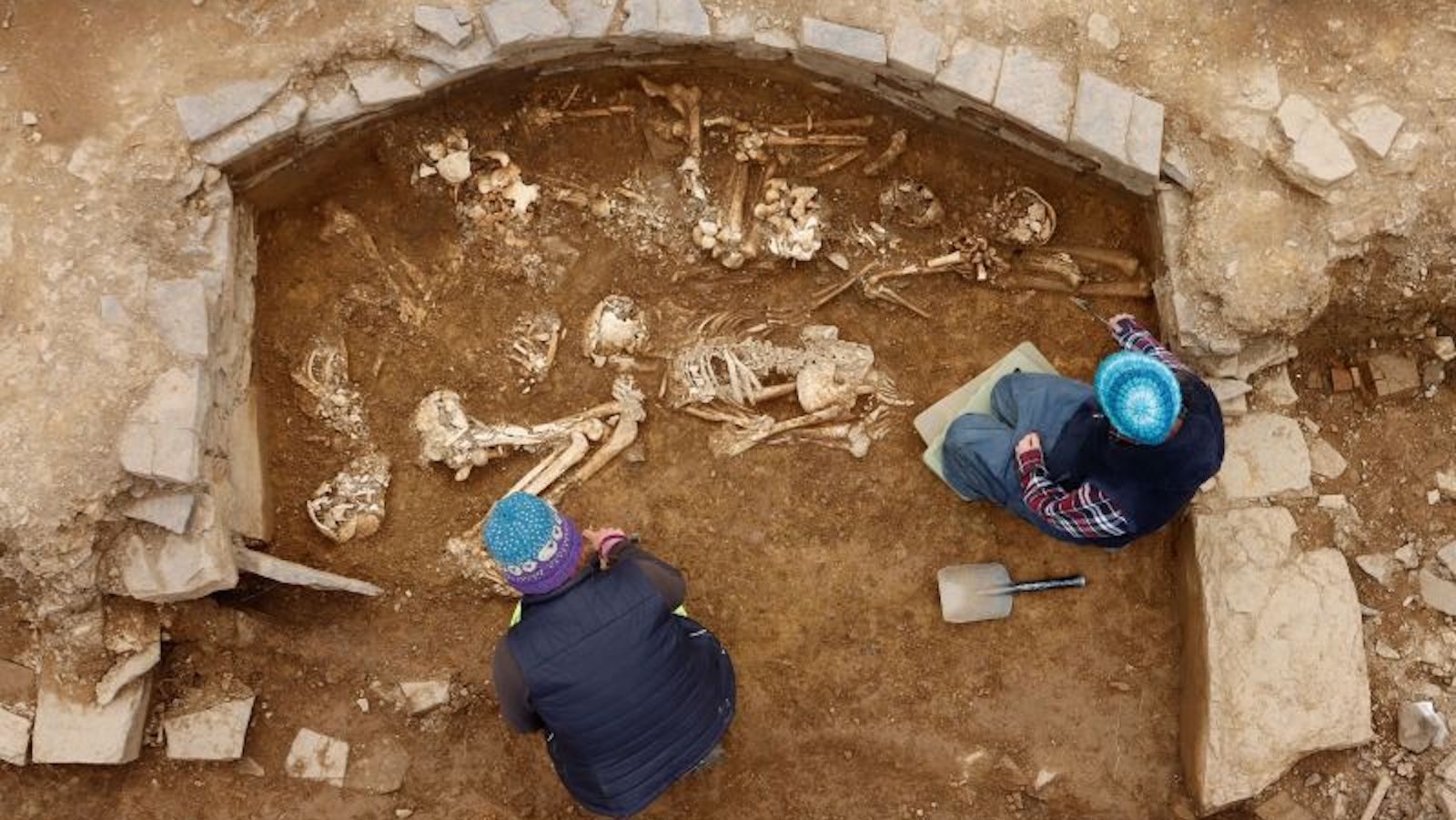(CNN) — The ruins of an “incredibly rare” 5,000-year-old tomb have been discovered on one of Scotland’s Orkney Islands, the National Museum of Scotland said in a statement on Tuesday.
Excavations at Holme, East Mainland, Orkney, revealed traces of a stone structure accessed via a 7-metre-long passageway and a cairn – or cairn – marking the “peak” of Neolithic engineering in North Britain. The report said.
In one of six small side cells surrounding a large stone chamber, 14 apparent skeletons of men, women and children and other human remains were found.
“In the Neolithic, this would have been an incredibly impressive mound, 15 meters in diameter, with very substantial stonework and very impressive architecture. “Those cells are real feats of engineering,” said Hugo Anderson, senior curator of prehistory (Neolithic), one of the co-directors of excavations at the National Museums of Scotland. – Wimark told CNN.
Anderson-Wymark said the two skeletons were positioned almost hugging each other, with two children placed head-to-head. However, archaeologists have yet to determine the relationships between these individuals.
“It is surprising that so many human remains have been preserved in one part of the monument, especially given the extensive looting of stone for building materials,” said archaeologist Vicky Cummings, director of Cardiff University’s School of History, Archeology and Religion, who led the excavation, in a statement.
“It is incredibly rare to find these grave deposits, even in well-preserved chambered tombs, and these remains will provide new insights into all aspects of the lives of these people,” he added.
The cemetery was largely destroyed in the 18th or 19th century to build a nearby farm. (Credit: National Museums Scotland)
Only 12 similar graves are known to exist in Orkney, known as the Mace Howe Passage Graves. Most of them are buried underground unlike this latest discovery and are still found on land.
It was razed in the late 18th or early 19th century to provide stone for building a farm, but core excavations in 1896 uncovered eight skeletons and led local antiquarian James Walls Cursiter to hypothesize that it was a cemetery. In ruins.
Documents preserved in a private collection of curator’s notes contained further clues that allowed archaeologists to conduct a geophysical survey in hopes of identifying a possible tomb and providing a basis for excavation.
“It was a big surprise to make that discovery,” Anderson-Wymark said. “It was a big thing, but today it’s slowly waddling across a lawn. There’s nothing on the surface that suggests this grave was there, but it must have been an incredible monument at one time. “We’re lucky they left us.”


:quality(85)/cloudfront-us-east-1.images.arcpublishing.com/infobae/BH6NLAQGXJGADFWTENBUV7Z7RQ.jpg)
:quality(85)/cloudfront-us-east-1.images.arcpublishing.com/infobae/3GK63ATFOMFAYNUAQKUL4WUJFM.jpg)

:quality(85)/cloudfront-us-east-1.images.arcpublishing.com/infobae/SJ35ZLSJ5NB4BWVRJPSK74P7AQ.jpg)